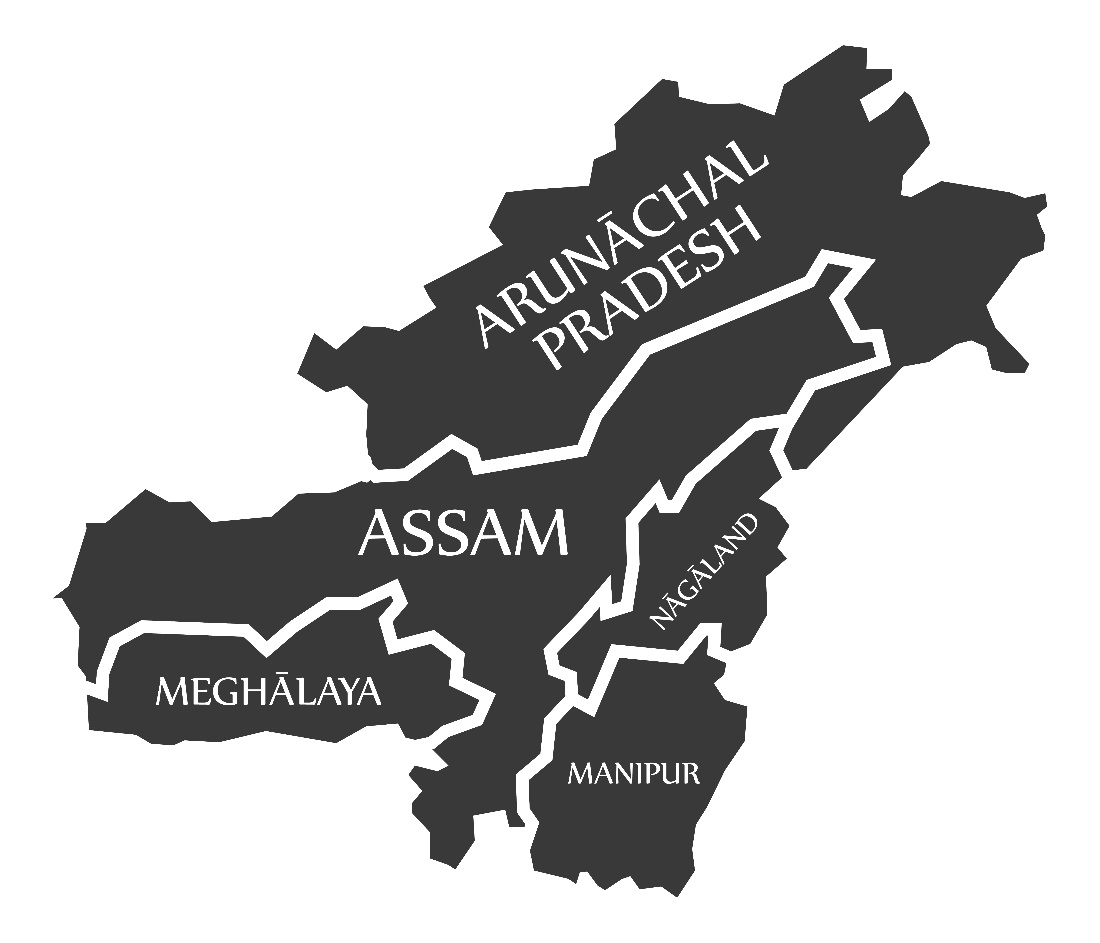
The recent apprehension of two individuals in Manipur’s Churachandpur district, caught smuggling narcotics worth an astonishing Rs 62 crore, lays bare the chronic ineffectiveness of the Indian government and the Manipur administration in addressing the region’s spiralling drug crisis. While the Assam Rifles deserve credit for their vigilance, the haul reveals a far more troubling reality: a system riddled with inefficiencies and plagued by a government whose response to the narcotics trade is sporadic, reactive, and, at worst, complicit.
Manipur—strategically located near the infamous ‘Golden Triangle,’ a global epicenter for narcotics production and trafficking—has become a key transit route for drugs entering India. This geographical vulnerability is no secret, yet the central government has failed to formulate a cohesive or sustained strategy to dismantle the deeply entrenched drug networks that operate with impunity. Instead of addressing the root causes, the Indian state opts for periodic crackdowns that generate headlines but leave the underlying ecosystem of drug trafficking largely untouched. The over-reliance on paramilitary forces like the Assam Rifles highlights this superficial approach, where addressing symptoms takes precedence over confronting the disease.
At the state level, the picture is equally dismal. Despite much-publicized anti-drug initiatives, such as the reconstitution of the Anti-Narcotics Task Force (ANTF) and the state’s widely advertised ‘War on Drugs’ campaign, Manipur’s narcotics trade remains resilient. The ANTF, despite being equipped with additional resources and personnel, has achieved little in combating the scale and sophistication of the drug trade. Similarly, the state’s ‘War on Drugs’ campaign—marked by claims of destroying poppy fields and seizing narcotics worth thousands of crores—amounts to little more than a PR exercise. The persistent flow of drugs, rampant poppy cultivation, and the overt involvement of local actors expose the hollowness of these initiatives, which lack genuine intent and execution.
This systemic failure is underpinned by harsh socio-economic realities. In the remote, hilly border regions of Manipur, the drug trade is not just an illegal activity but an economic lifeline for many. Widespread unemployment, coupled with a lack of viable livelihoods, has left locals with few alternatives but to resort to poppy cultivation and trafficking. This stark reality is met with government indifference, as addressing the drug trade’s socio-economic underpinnings would require comprehensive development efforts that the state appears unwilling to undertake. A meaningful crackdown on narcotics would inevitably compel those dependent on the trade to demand sustainable economic opportunities and accountability—demands the administration is evidently ill-prepared to meet. This tacit acknowledgment of the region’s economic fragility exposes the government’s inability to act decisively.
Adding to this quagmire are allegations of political complicity in the drug trade. Reports of local politicians facilitating smuggling operations in exchange for hefty commissions have repeatedly surfaced, undermining public trust and exposing the rot within the system. The unholy nexus between politicians, law enforcement, and smugglers is an open secret that erodes the credibility of anti-drug campaigns. As long as these vested interests remain entrenched, any semblance of progress will remain illusory, with the state’s anti-narcotics measures little more than window dressing.
Compounding these domestic failures is the porous Indo-Myanmar border, a gateway for contraband that facilitates the seamless movement of narcotics and other illicit goods. Transnational criminal networks exploit this weak point with ease, turning the region into a hub of cross-border trafficking. Despite the critical importance of this issue, India has shown little initiative in forging robust diplomatic collaborations with Myanmar or other neighboring countries to combat the transnational drug trade. The absence of meaningful international cooperation leaves enforcement agencies overstretched and ill-equipped to tackle a crisis of this magnitude, further highlighting the Indian state’s failure to recognize and address the crisis’s global dimensions.
The Indian media, which could play a pivotal role in exposing the depth of the drug crisis, has largely fallen short. While high-profile drug busts occasionally dominate headlines, countless cases of smuggling go unreported, allowing the government to maintain a facade of control. This selective reporting obscures the true scale of the problem and enables authorities to evade accountability for their inability to curb the crisis. The media’s lack of sustained focus on the region’s drug trade feeds into a broader narrative of state apathy, where superficial victories overshadow the entrenched structural issues.
Ultimately, the drug crisis in Manipur is not just about smuggling and addiction; it is a symptom of the Indian state’s systemic failure in governance. A genuine solution to the crisis requires much more than token gestures and public relations campaigns. It demands a comprehensive strategy that confronts the socio-economic conditions driving the drug trade, dismantles the political-criminal nexus, strengthens enforcement mechanisms, and fosters international collaboration to curb cross-border trafficking.
However, the Indian state’s historical neglect of its northeastern region suggests little willingness to undertake such measures. The enduring economic marginalization, inadequate infrastructure, and lack of political will in the region are emblematic of a broader pattern of indifference, where the northeast is treated as a peripheral concern rather than an integral part of the nation. The persistent drug crisis in Manipur is merely a reflection of this systemic failure, where the state’s inaction perpetuates an ecosystem of corruption, exploitation, and despair.
Without a transformative shift in policy and governance, the crisis will continue to fester, jeopardizing not only the future of Manipur but also the security and social cohesion of the entire region. The Indian government’s failure to act decisively on this issue is not just a failure of policy but a betrayal of its responsibility to protect and uplift its citizens. The northeast’s narco-trafficking trail is not merely a regional issue; it is a damning indictment of a state unwilling to confront its failings.
